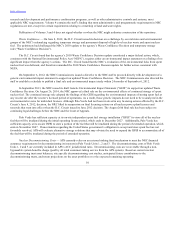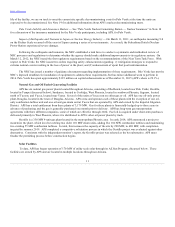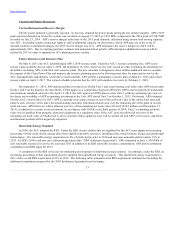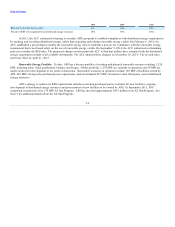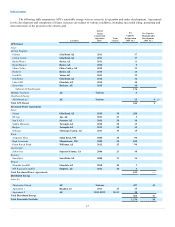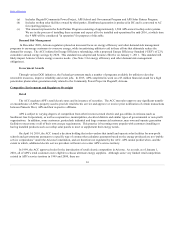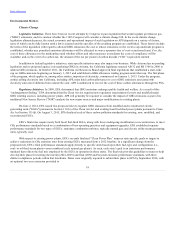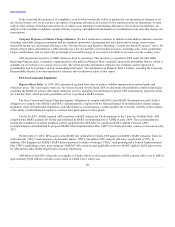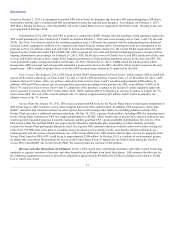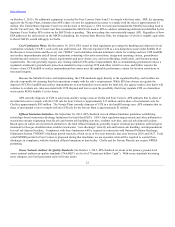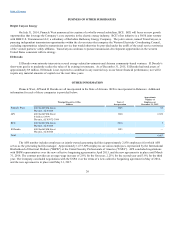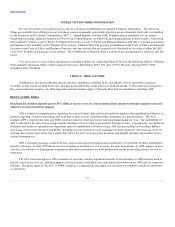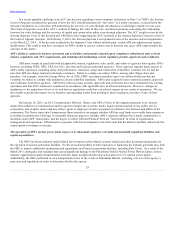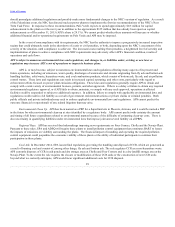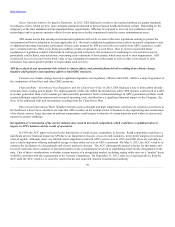APS 2015 Annual Report Download - page 23
Download and view the complete annual report
Please find page 23 of the 2015 APS annual report below. You can navigate through the pages in the report by either clicking on the pages listed below, or by using the keyword search tool below to find specific information within the annual report.
Table of Contents
In the event that the incurrence of compliance costs is not economically viable or prudent for our operations in Arizona or on
the Navajo Nation, or if we do not have the option of acquiring allowances to account for the emissions from our operations, we may
explore other options, including reduced levels of output, as an alternative to purchasing allowances. Given these uncertainties, our
analysis of the available compliance options remains on-going, and additional information or considerations may arise that change our
expectations.
Company Response to Climate Change Initiatives. We have undertaken a number of initiatives that address emission concerns,
including renewable energy procurement and development, promotion of programs and rates that promote energy conservation,
renewable energy use, and energy efficiency. (See “Energy Sources and Resource Planning - Current and Future Resources” above for
details of these plans and initiatives.) APS currently has a diverse portfolio of renewable resources, including solar, wind, geothermal,
biogas, and biomass, and we expect the percentage of renewable energy in our resource portfolio to increase over the coming years.
APS prepares an inventory of GHG emissions from its operations. This inventory is reported to EPA under the EPA GHG
Reporting Program and is voluntarily communicated to the public in Pinnacle West’s annual Corporate Responsibility Report, which is
available on our website (www.pinnaclewest.com). The report provides information related to the Company and its approach to
sustainability and its workplace and environmental performance. The information on Pinnacle West’s website, including the Corporate
Responsibility Report, is not incorporated by reference into or otherwise a part of this report.
EPA Environmental Regulation
Regional Haze Rules. In 1999, EPA announced regional haze rules to reduce visibility impairment in national parks and
wilderness areas. The rules require states (or, for sources located on tribal land, EPA) to determine what pollution control technologies
constitute the BART for certain older major stationary sources, including fossil-fired power plants. EPA subsequently issued the Clean
Air Visibility Rule, which provides guidelines on how to perform a BART analysis.
The Four Corners and Navajo Plant participants’ obligations to comply with EPA’s final BART determinations (and Cholla’s
obligations to comply with ADEQ’s and EPA’s determinations), coupled with the financial impact of potential future climate change
legislation, other environmental regulations, and other business considerations, could jeopardize the economic viability of these plants
or the ability of individual participants to continue their participation in these plants.
Cholla. In 2007, ADEQ required APS to perform a BART analysis for Cholla pursuant to the Clean Air Visibility Rule. APS
completed the BART analysis for Cholla and submitted its BART recommendations to ADEQ in early 2008. The recommendations
include the installation of certain pollution control equipment that APS believes constitutes BART. ADEQ reviewed APS’s
recommendations and submitted its proposed BART State Implementation Plan (“SIP”) for Cholla and other sources in Arizona in early
2011.
On December 5, 2012, EPA issued a final BART rule applicable to Cholla. EPA approved ADEQ’s BART emissions limits for
sulfur dioxide (“SO2”) and emissions of particulate matter (“PM”), but added a SO2 removal efficiency requirement of 95%. In
addition, EPA disapproved ADEQ’s BART determinations for oxides of nitrogen (“NOx”) and promulgated a Federal Implementation
Plan ("FIP") establishing a new, more stringent “bubbled” NOx emission rate applicable to the two BART-eligible Cholla units owned
by APS and the other BART-eligible unit owned by PacifiCorp.
APS believes that EPA’s final rule as it applies to Cholla, which would require installation of SCR controls with a cost to APS of
approximately $100 million (excludes costs related to Cholla Unit 2 which was
20


